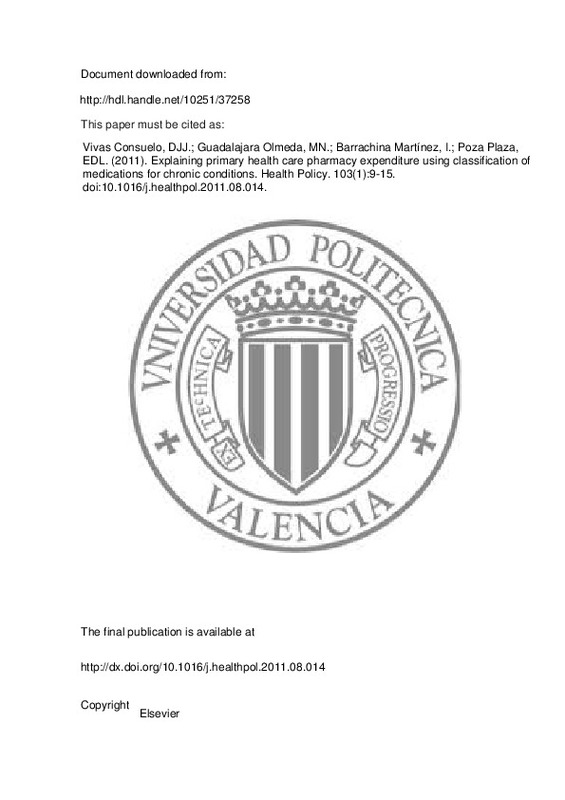JavaScript is disabled for your browser. Some features of this site may not work without it.
Buscar en RiuNet
Listar
Mi cuenta
Estadísticas
Ayuda RiuNet
Admin. UPV
Explaining primary health care pharmacy expenditure using classification of medications for chronic conditions
Mostrar el registro completo del ítem
Vivas Consuelo, DJJ.; Guadalajara Olmeda, MN.; Barrachina Martínez, I.; Trillo-Mata, J.; Usó-Talamantes, R.; De La Poza, E. (2011). Explaining primary health care pharmacy expenditure using classification of medications for chronic conditions. Health Policy. 103(1):9-15. https://doi.org/10.1016/j.healthpol.2011.08.014
Por favor, use este identificador para citar o enlazar este ítem: http://hdl.handle.net/10251/37258
Ficheros en el ítem
Metadatos del ítem
| Título: | Explaining primary health care pharmacy expenditure using classification of medications for chronic conditions | |
| Autor: | Trillo-Mata, José-Luis Usó-Talamantes, Ruth | |
| Entidad UPV: |
|
|
| Fecha difusión: |
|
|
| Resumen: |
Background
The Valencian Autonomous Community (Spain) has implemented a scheme of purchasing services with the participation of public and private providers. Five districts are managed using public¿private partnership. ...[+]
|
|
| Palabras clave: |
|
|
| Derechos de uso: | Reserva de todos los derechos | |
| Fuente: |
|
|
| DOI: |
|
|
| Editorial: |
|
|
| Versión del editor: | http://dx.doi.org/10.1016/j.healthpol.2011.08.014 | |
| Agradecimientos: |
The authors thank the General Direction of Pharmacy of the Valencian Department of Health for financial support and the working group for providing the data set. The opinions expressed in this paper are those of the authors ...[+]
|
|
| Tipo: |
|







![[Cerrado]](/themes/UPV/images/candado.png)


